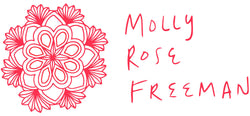
Last week, I wrapped up a very special project. Almost a year ago, the Office of Public Housing in Chapel Hill invited me to create a mural in one of their communities, inspired by and in collaboration with the residents. On my initial site visit, what struck me first were all the gardens: there was one in almost every yard, and they were bursting with growth. Whenever I do a site visit, I pay attention to that first *ping* of inspiration and let it be the seed from which everything else grows. In this case, inspired by the residents’ lush and thriving gardens, the process was almost literal.
When I came back to visit again, I ended up drawing for hours with kids who lived in the neighborhood, talking about our favorite foods and what we liked to cook. They showed me what they were growing: tiny watermelons, towering okra, bright orange Thai chilis (they dared me to eat one, naturally!) Older residents shared with me about foods they ate on special occasions, what they’d grown in their gardens when they were young, dishes that had meaning for their families. They described making health drinks with pennywort, fish dishes with ginger and lemongrass, holidays meals with sweet potatoes and fried chicken.
When I talked about using this theme of gardening and food traditions with Faith Brodie, the director of Public Housing and the woman who first envisioned this project, she said “Food brings people together. Everyone loves to eat!” She was right: food connects people to each other, to their cultures, to memories, to the land. And so the mural became an expression of those connections, a collage of plants that had special meaning for the residents: okra, tomato, hibiscus, watermelon, and pennywort. Each one represents a favorite recipe, a childhood memory, a celebration of home.


There is another layer to the mural, one I did not expect. As I spent time in the neighborhood, I got to know a lot of the kids. The mural wall is right across from the playground and the basketball court, so everyday the kids would get home from school and play near where I was painting. They came over to visit with me and ask me questions about myself, the mural, and the boom lift I was using to paint the two-story wall. And every day, they asked if they could paint.
Originally, we’d planned to have a couple community paint days where residents could come and put their mark on the wall, a kind of paint-by-number approach so even those who didn’t feel confident with a paintbrush could participate. But these kids wanted more! So I gave them a simple prompt: paint anything you’d find in a garden. They painted apple trees and flower buds, broccoli and pears, many-legged centipedes and long lines of tiny ants. They also painted characters from video games, signs that said “Open” and “Welcome,” and a portrait of me as Cat in the Hat! When we were finished, the mural was a true collaboration. Their marks mixed with mine to create a thriving landscape, full of life, creativity and joy.
I named the mural “Community Garden,” which is a simple phrase that can mean so much. It refers to the literal gardens that are tended by a community: sources of food, healing and beauty. It alludes to a community as a place to put down roots. It represents the networks that hold a community together—family, friends, neighbors—like the network of mycelium that connects everything underground, providing what is essential and sustaining. And it describes two ecosystems—the community and the garden—that are made strong and fruitful through inter-dependence, reciprocity and care.
It was a joy to spend time in this neighborhood and an honor to be welcomed with kindness and generosity. I feel very lucky to have had this opportunity, and I want to thank everyone in the offices of Public Housing and Public Art, and especially the residents of South Estes community, for bringing this project to life with me.
May your gardens, and your communities, grow healthy and strong!
XOXO
Molly
P.S. Here is a picture of my collaborators at work!

